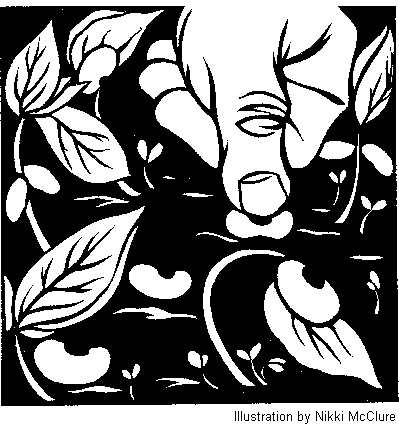Growing Biointensive: A Hopeful Food MovementBy Thea Davis
Olympia was fortunate to have John Jeavons, the "godfather" of the Grow Biointensive Food-Raising Method, speak about the state of our global food supply in February. His warnings about our food supply and call to action were compelling. He compared the problems of our conventional and organic farming methods against some of the benefits of Biointensive methods, which date back thousands of years. According to Jeavons, here is the bottom-line problem of our global food supply: Our planet is gaining about 213,000 humans each day. At that growth rate, we have to bring 34,000 acres of land into crop production every day to support them. Simultaneously, we primarily use conventional or organic farm production methods. Given this, we are also losing valuable topsoil each day. For every pound of food grown commercially, we lose six pounds of topsoil. With current population growth, we cannot afford this. By doing the math, we will see global food shortages and starvation within about ten years. When I mentioned Jeavons' lecture to my stepdad, he said I was the third source to mention food shortages that week, after his financial planner and a Time magazine article. So it's not so far-fetched after all. We are lucky to have this information, and we have a golden opportunity to work together in our communities. I am not alone in that feeling. We are fortunate that Jeavons' daughter and son-in-law, Heather and Tim McLeod, live in Olympia. They helped promote Jeavons' tour of the west coast. Heather grew up on a biointensive farm, and brings to our community a unique perspective. "My whole life I have grown up with having this idea that we are going to have no food at all — which as an 8-year-old is kind of hard to deal with," Heather said. "We are losing our soil; on a global level, we are going to have mass starvation. [Growing locally] allows you to separate from that and just say, all right, I'm just going to grow soil, in my yard and in my area. That feels more manageable to me." And that is hopeful.
Build Peak Topsoil! The fact is, with organic farming, for every pound of food raised, we are still losing three to five pounds of topsoil. With Biointensive methods, for every pound of plants raised, we can "grow" 20 pounds of topsoil, if done properly. While organic farming practices are an important step in our global food market, 50 to 80 percent of organic farms are not sustainable because of the high use of outside soil inputs. Biointensive methods offer a way to "grow soil" and nutritious food with very little space and in a closed system, with little to no outside inputs. With most of us living in urban environments and the increased cost of these outside inputs, this level of sustainability is important. Biointensive methods also include deep soil preparation or "double-digging," close planting, and careful soil and compost preparation. Jeavons explained that, though these practices initially require more planning and physical work, ultimately they yield much greater volume, nutrition, and much more top soil. In fact, their literature states the "vegetable yield potential" is two to six times greater than commercial levels, and wheat can yield five times the national average.
Sponsor a Farmer to Learn the Process...
...Build Support Networks and Experience TJ Johnson, who is a former Olympia Councilmember, a community activist, and a longtime organic gardener, echoed Jeavons' sentiments: "What I'm interested in is some kind of support group: gardeners getting together, sharing stories and successes, [ trading ] my lettuce with someone who has extra broccoli, bartering, working completely outside government and the market economy." Since Jeavons' lecture last month, Johnson has started tracking his time and expenses to see how much produce can be grown sustainably on an average-sized urban lot. This includes a goal of setting aside 30 percent of his garden space to grow "carbon crops" for compost, something that might prove impossible for space-constrained urban gardeners. In our society of juggling busy schedules, why juggle schedules with farmers, friends, and strangers to grow food? Why not swing by the grocery store on the way home? It's true, it's more work. Like a lot more work! But historically speaking, the luxurious era of food provided cheaply is slipping away, including diminishing fossil fuels and the nutrient value of our food. For our families' future and well-being, we need to put community time into growing and learning about food — skills to build our future on. Thea Davis is a volunteer staff member of the South Sound Green Pages.
Back to Home page. |

